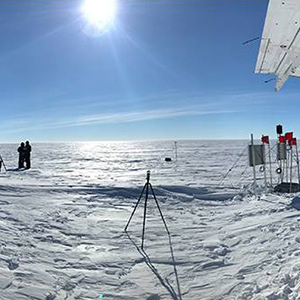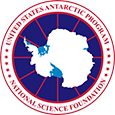|
An Unprecedented Window Opens into a Lake Buried Beneath the Antarctic Ice Sheet 
National Science Foundation Posted November 9, 2018 Initial data acquired by GPS observations made by OPP-funded researchers indicate that they may have beaten the odds while observing a lake buried more than 1000 meters under West Antarctic Ice Sheet and captured data as the lake drained as part of a multi-year ”fill-drain” cycle”. “We just hit the jackpot: given the huge amount of lead time needed to execute a project like this, the odds of actually exploring a lake during a rapid drainage event are incredibly slim. This is going to be really exciting stuff,” said Matthew Siegfried, a glaciologist with the NSF funded Subglacial Antarctic Lakes Scientific Access (SALSA) project. Read more about the find on the SALSA Website here: https://salsa-antarctica.org/2018/11/08/lake-mercer-update-an-unprecedented-view-into-subglacial-lake-draining/ Mercer Subglacial Lake lies beneath the Whillans Ice Plain, a fast-moving section of the West Antarctic Ice Sheet. GPS stations have been installed at the lake site for over a decade and, with the return of the sun to power their batteries, have recently powered back on from their winter hiatus. Scientists know more about Mars than Antarctica’s subglacial environment. SALSA aims to uncover new knowledge about this newly explored biome by studying subglacial geobiology, water-column and sedimentary organic carbon, and geobiological processes in one of the largest subglacial lakes in West Antarctica.
|



For USAP Participants |
For The Public |
For Researchers and EducatorsContact UsU.S. National Science FoundationOffice of Polar Programs Geosciences Directorate 2415 Eisenhower Avenue, Suite W7100 Alexandria, VA 22314 Sign up for the NSF Office of Polar Programs newsletter and events. Feedback Form |

